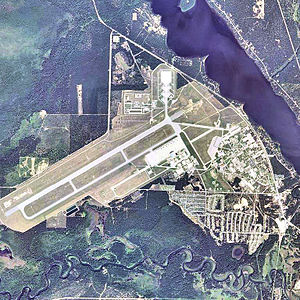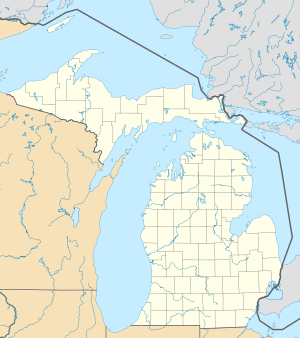Oscoda_Army_Air_Field
Wurtsmith Air Force Base
US Air Force base
Wurtsmith Air Force Base is a decommissioned United States Air Force base in Iosco County, Michigan. Near Lake Huron, it operated for seventy years, from 1923 until decommissioned in 1993. On January 18, 1994, Wurtsmith was listed as a Superfund site, due to extensive groundwater contamination with heavy metals, polycyclic aromatic hydrocarbons, volatile organic compounds, including trichloroethylene, 1,1-dichloroethane, 1,1,1-trichloroethane, and vinyl chloride. In 2010, Per- and polyfluoroalkyl substances contamination was discovered, and as of 2022 remediation is still ongoing.
This article needs additional citations for verification. (September 2017) |

During the Cold War, Wurtsmith was one of three Strategic Air Command (SAC) bases in Michigan with the B-52 bomber, the others (Kincheloe AFB and Sawyer AFB) were in the Upper Peninsula. The base was named in honor of Major General Paul Wurtsmith, commander of SAC's Eighth Air Force, who was killed when his B-25 Mitchell bomber crashed on Cold Mountain near Asheville, North Carolina, on September 13, 1946.[1][2]
In 2022, Granot Loma was being touted as a potential space port in the Upper Peninsula,[3] in tandem with Wurtsmith.[3]


